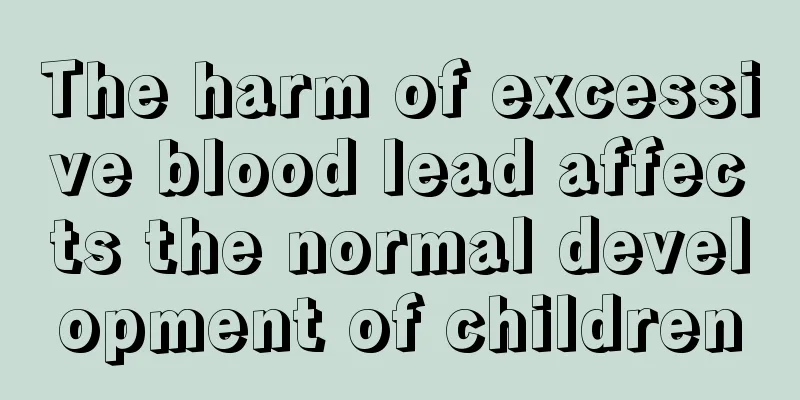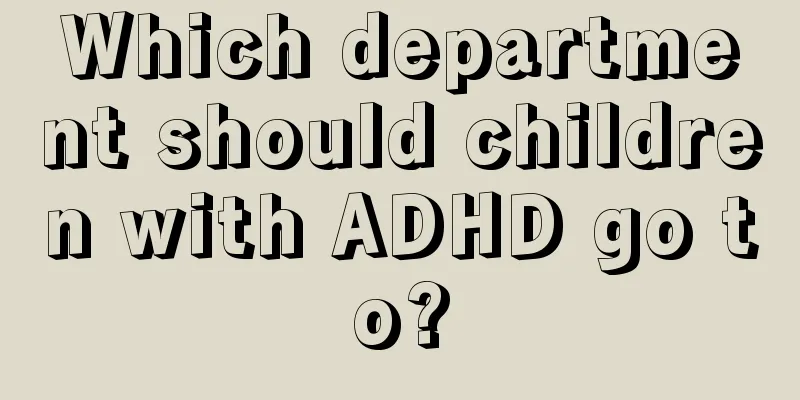What are the symptoms of congenital hip dysplasia in children?

|
There are many congenital diseases in children, and these congenital diseases are brought from the mother. If one day you suddenly see some poor development of the hip joint, parents will be quite surprised. Some careless parents have not noticed that their children's hip joints have begun to develop poorly. There are many symptoms of congenital hip dysplasia. Let's take a look at the symptoms of congenital hip dysplasia in children. Congenital hip dysplasia is a gradually progressive disease with different anatomical and pathological changes in different age groups, most of which can be reversed in the early stages. However, if not treated promptly, the femoral head will shift proximally and laterally. This instability will lead to degenerative changes in the articular cartilage, which will become obvious in young adulthood and progress rapidly, turning into severe degeneration within a few years. The final pathological changes include subchondral sclerosis and cystic changes of the acetabulum and femoral head, osteophyte formation, and loss of articular cartilage. If treatment is performed in the early stages or surgery is performed to change the direction of the acetabulum and the force line of the joint, the progression of degeneration can be slowed down. Once severe degeneration occurs, if effective treatment is not given in the early stages, the condition will be irreversible. If it is not discovered or properly treated until school age, even though complex surgical treatments including pelvic osteotomy and femoral osteotomy can be used, it will be impossible to obtain a basically normal hip joint. This will seriously affect the appearance, gait, motor function, and social and psychological adaptability of children's lower limbs. If not treated or the treatment is ineffective, osteoarthritis will eventually occur at a very young age and hip replacement will have to be performed. There are several factors that predispose to developmental dysplasia of the hip: breech birth, oligohydramnios during the first pregnancy, torticollis, plantar adduction, left hip involvement more than the right, and postnatal banding of the newborn in an extended hip position (candle wrap). About 30% of children have a family history. In children of different age groups, congenital hip dysplasia has different clinical manifestations: 1. Neonatal period: increased skin wrinkles on the inner thighs or buttocks; limited hip abduction; joint clicking; unequal leg lengths or asymmetric buttocks. 2. Infancy: If the hip joint is no longer repositionable, corresponding special signs will appear: limited hip abduction, shortened thigh, upward displacement of the greater trochanter, asymmetric thigh skin lines, piston hip, and positive Galeazzi sign. 3. Children in the walking stage: For unilateral dislocation, the clinical signs are obvious: shortening and lameness of the affected limb, pelvic drop when the affected side bears weight, and the body tilts toward the affected side, that is, abductor muscle lameness or positive Trendelenburg test. Patients with bilateral dislocation present with bilateral limp gait, increased lumbar lordosis, pelvic descent during rest, and excessive internal or external rotation of both hip joints. 4. Imaging examination findings: Ultrasound: Ultrasound examination is only suitable for infants under 4 months old, and can be up to 6 months old; X-ray examination: The commonly used method is to take an AP radiograph of both hip joints, which can directly observe the relationship between the femoral head and acetabulum (X-rays are not recommended for children under 6 months old). Treatment principles for congenital hip dysplasia: The earlier the treatment, the more likely it is to eventually obtain a nearly normal hip joint. If diagnosed, treatment can be given immediately after birth. If the best time for treatment is missed, even with various treatments including complex pelvic surgery, a basically normal hip joint cannot be achieved. Parents can find clues of developmental hip dislocation/dysplasia from the following aspects: ① Asymmetric skin texture on the inner thigh and buttocks; ② Unequal width of buttocks; ③ Unequal length of lower limbs; ④ Positive abduction test; ⑤ Hip joint clicking; ⑥ Abnormal gait (duck walk); ⑦ Abnormal standing posture. The above are the symptoms of congenital hip dysplasia in children. If you suddenly see your child showing similar symptoms one day in your life, you should promptly check to determine what is going on with the child and whether it is caused by hip dysplasia. If so, you should give the child timely treatment and, if necessary, surgery. |
<<: What is ductus arteriosus in infants?
>>: What to do if children's immunoglobulin A is low
Recommend
How effective is pediatric massage in removing phlegm?
In the cold winter, babies are prone to symptoms ...
What to do if your child has a fever
Children are very lively and active, and often pl...
Children's Tourette Syndrome
In the eyes of many parents, tics can recover on ...
What should I do if my child has a runny nose and cough?
People often have runny noses, such as after a co...
How to nourish children's brain
I believe everyone agrees on a simple truth: havi...
What to do if your child's new teeth become loose
Children's growth is the most important thing...
What are the reasons for the red spots on the baby's mouth?
Many babies are prone to the symptom of red spots...
What is normal vision for children?
Children's eyes are very fragile and need spe...
Does a baby sticking out tongue mean cerebral palsy? Reveal the truth to you
Some babies will stick out their tongues for a lo...
Things to note when taking care of your baby in summer
When parents are taking care of their babies, the...
How to cure indigestion in babies
Indigestion is a common disease among children. T...
What to do if your one-year-old baby cries a lot
Many babies cry when they are young, but generall...
What to do if your child has a toothache and a swollen face
Toothache is not a disease, but it is really pain...
What to do if baby's bronchitis persists
If the baby's bronchitis does not get better,...
What are the symptoms of high blood sugar in children
Children's bodies are the healthiest, so all ...









